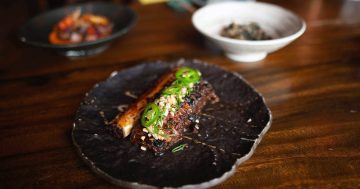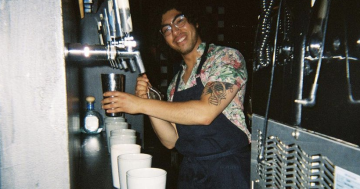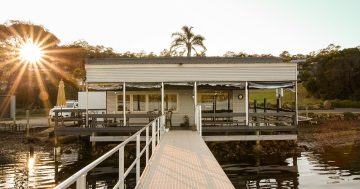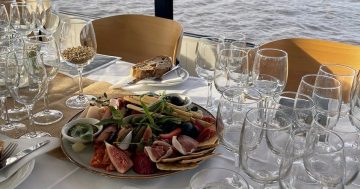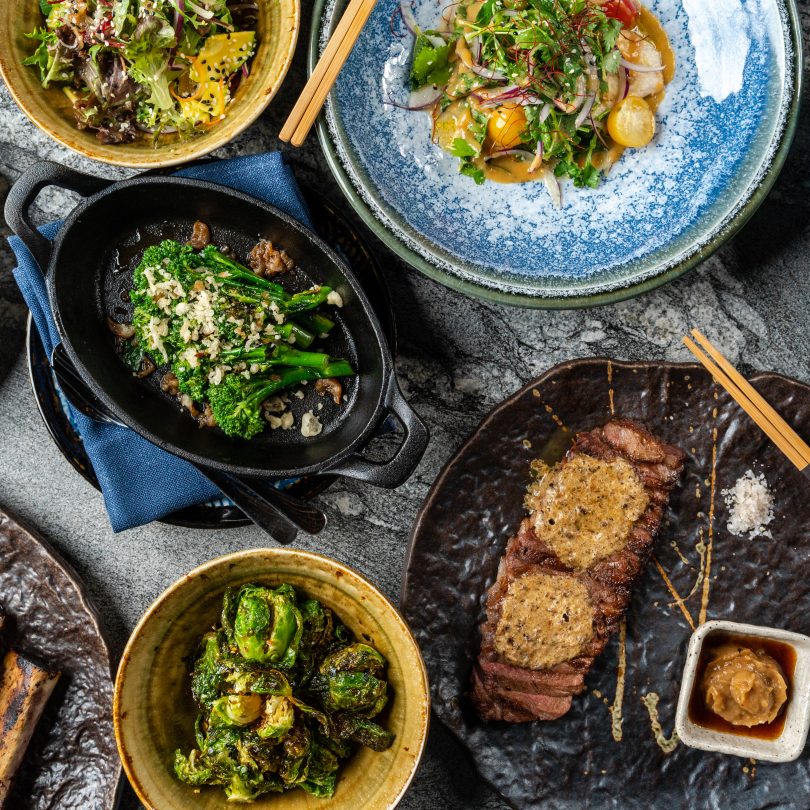
Inka’s menu focuses on a harmonious blend of Peruvian and Japanese flavours. Photo: Supplied.
Canberra’s most hotly anticipated new restaurant has been a long time coming, but stepping into the Peruvian wonderland that is Inka, it quickly becomes clear why.
The Glebe Park end of Bunda Street is now home to an impressive new destination restaurant – a glamorous combination of dual-level dining room and cocktail bar that wouldn’t be out of place in London, New York or Madrid.
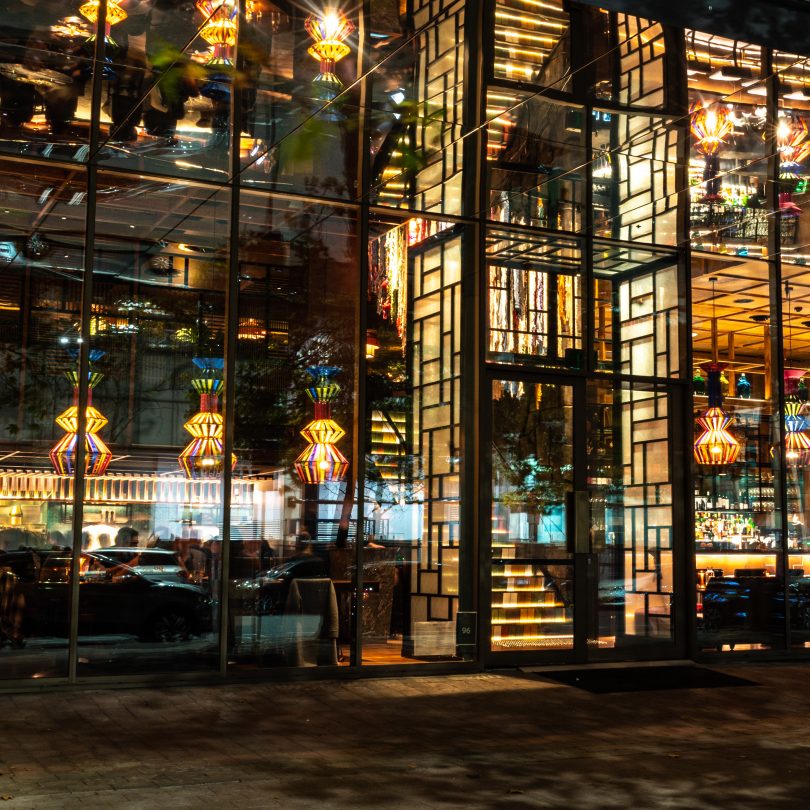
The dramatic exterior is the first indication of the experience that awaits inside Inka restaurant. Photo: Supplied.
Co-owner Sunny Matharu admits it’s the most expensive restaurant fit-out in Canberra, but like those Grand Designs participants being grilled by TV host Kevin McLeod at the end of their renovation, he’s reluctant to put an exact figure on the cost of the build.
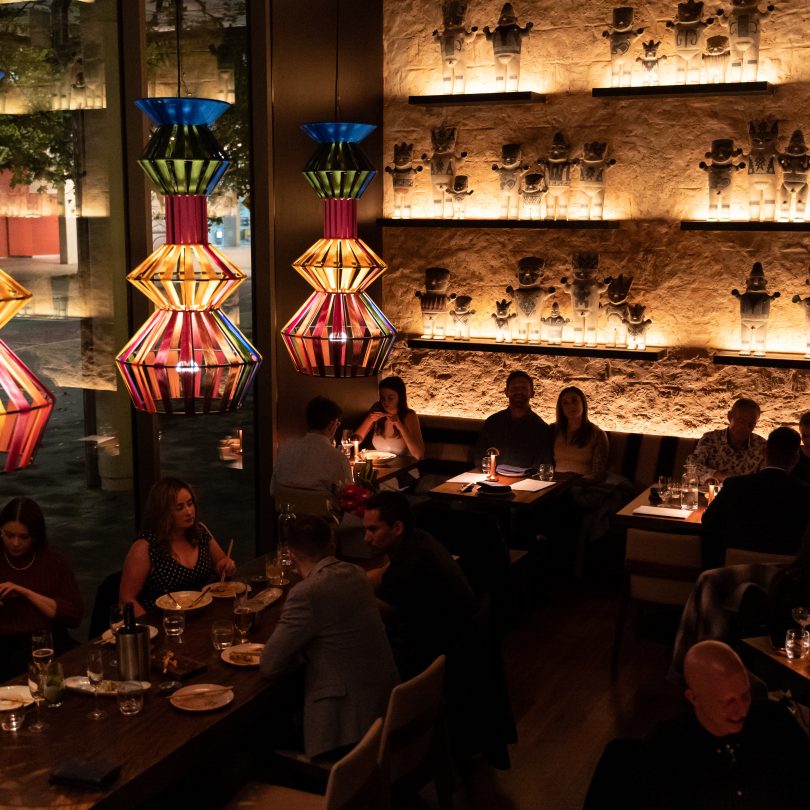
Mood lighting adds to the atmosphere at the newly opened Inka. Photo: Supplied.
Suffice to say, things were not done on the cheap. It was only after 43 internal design iterations that Sunny and his business partners Kiehyon Yoo and Adam Elchakak realised some of the services were on the wrong side of the room and would affect the flow of the space. Twenty seven versions later and the layout finally met the exacting standards of the trio.
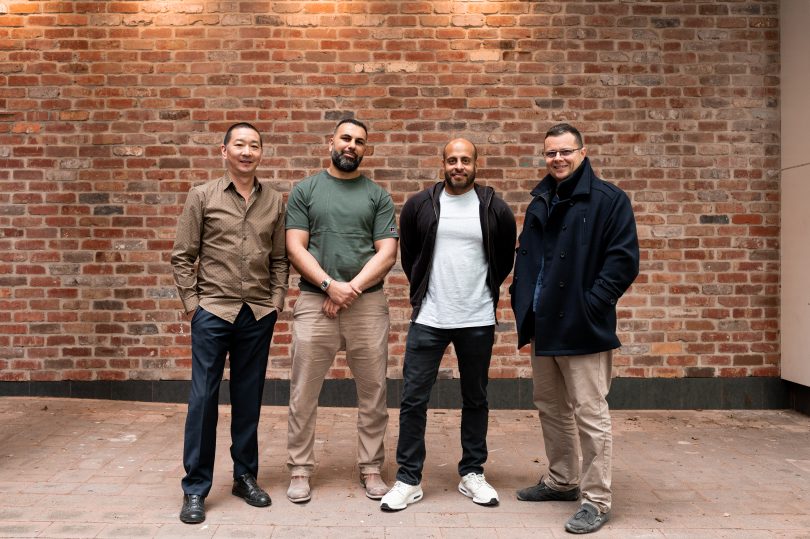
The Inka team (from left) Kiehyon Yoo, Adam Elchakak, Sunny Matharu and executive chef Michael Muir. Photo: Supplied.
“We self-funded this restaurant, so we’re in a position where we can say ‘this isn’t good enough’ and start again when we want to,” said Sunny, who will soon launch a new Japanese restaurant, Kazan, in Sydney’s Martin Place.
To ensure Inka offered an authentic flavour of South America, the team conscripted Lima-based interior designer Patricia Barbis to work with a local architect, and commissioned original artwork and textiles.
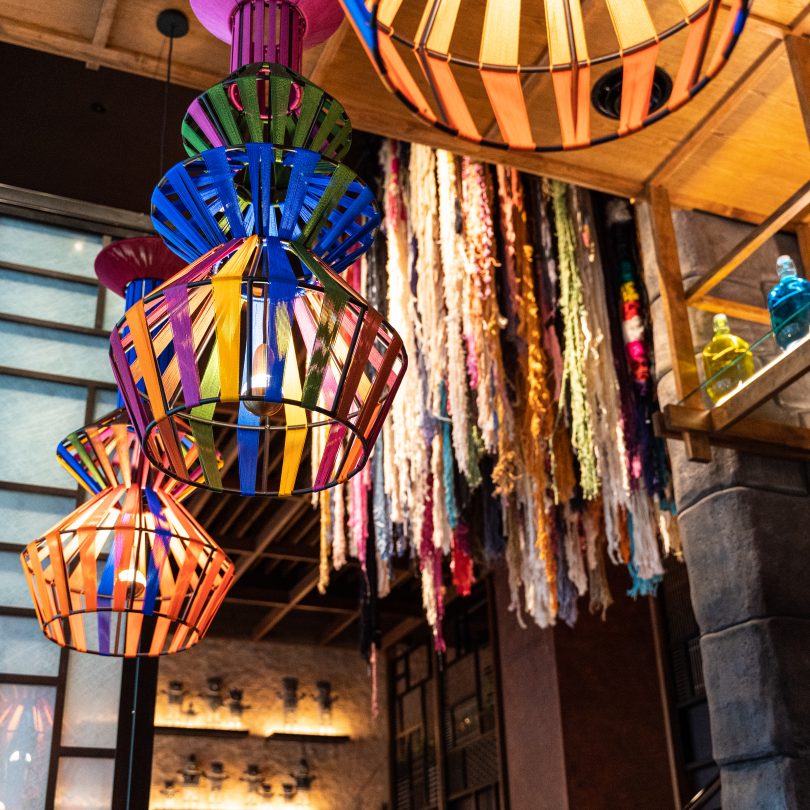
Vibrant art installations and light fittings were commissioned for the dual-level space. Photo: Supplied.
A dramatic, three-piece fabric installation modelled on an ancient Peruvian method of communication cascades down the central staircase from above; a wall of terracotta Inca figurines flanks one side of the downstairs dining room, while the expansive open kitchen on the same level is framed by elegant bespoke wooden latticework.
The cocktail bar, to the right as you enter the restaurant, features an exquisitely detailed quartzite benchtop, hot pink velvet-covered stools and vibrant blue leather banquettes.
Upstairs on the mezzanine level, we’ve settled into a semi-circular teak and blue leather banquette – one of several that line the back wall of the restaurant. The mirrored wall behind gives the room the feeling of being twice the size and I’m loving the low-level mood lighting (bad hair day).
It’s a Thursday night and the place is humming. Sunny tells me the bloke with a group of friends at the booth next door has dined here four times already – some commitment given the place has only been open for six days.
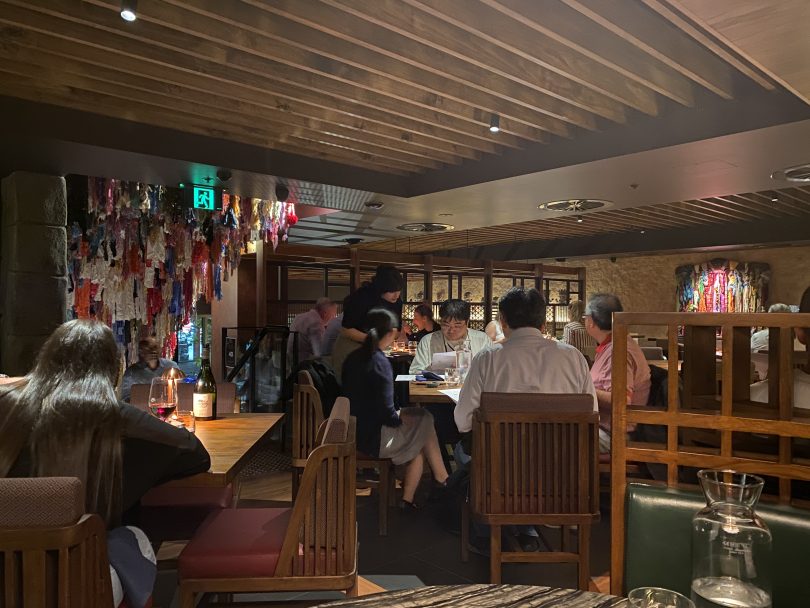
The mezzanine dining area is packed on the sixth night of service. Photo: Michelle Rowe.
Clearly the food, courtesy of executive chef Michael Muir, is hitting the mark. His CV lists Michelin-starred Zuma in London and Istanbul and Neil Perry’s Rockpool in Sydney among its highlights. While Zuma’s menus are based on Japanese izakaya, or bar-style, dining, at Inka Michael and his team will be turning out Nikkei cuisine – a blend of Peruvian and Japanese flavours and techniques.
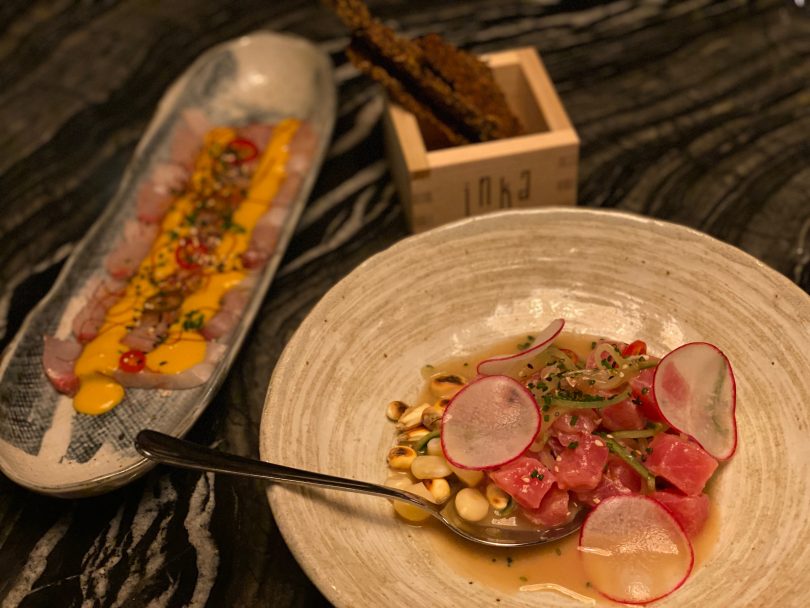
Inka’s tuna ceviche perfectly encapsulates the principles of Nikkei cuisine. Photo: Michelle Rowe.
Peru’s connections with Japan run deep. Japanese migrants arrived in the South American nation in the late 19th century looking for jobs and farming opportunities and many of them stayed, infusing the local cuisine (featuring staple ingredients such as corn, potatoes and grains) with a vibrant, centuries-old food culture.
Nikkei food is heavy on seafood and this is reflected in Inka’s opening menu. A lovely starter of maguro tataki sees lightly seared rolls of tuna combined with sake-flavoured onions, julienne cucumber, ginger, ponzu and fried slices of garlic.
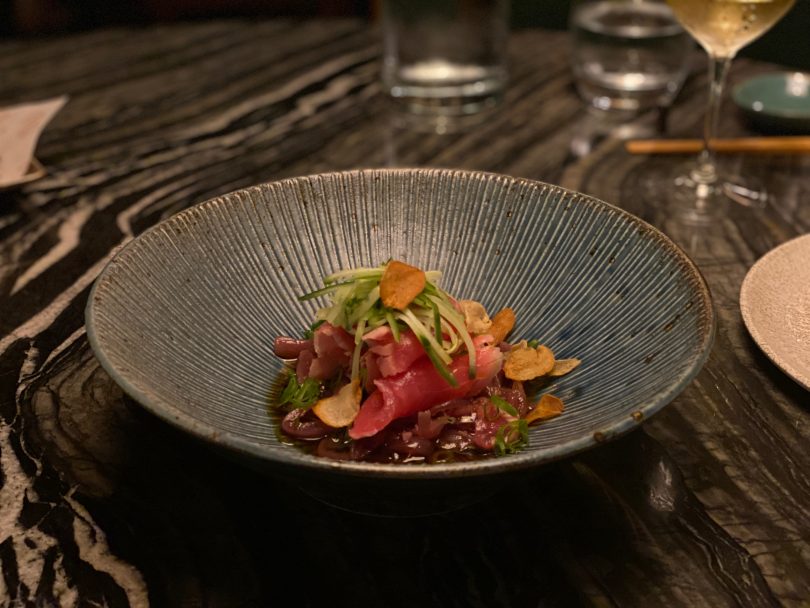
Maguro tataki features seared tuna, sake-flavoured onions, cucumber, ginger, ponzu and fried garlic. Photo: Michelle Rowe.
From the ‘nigiri’ section, salmon sushi is given a Peruvian twist with quinoa puffs, and is flavoured with yuzu and miso, while tuna gets a makeover with a traditional Peruvian ‘chalaquita’ salsa and black quinoa. I could eat the salmon version until the criollos come home.
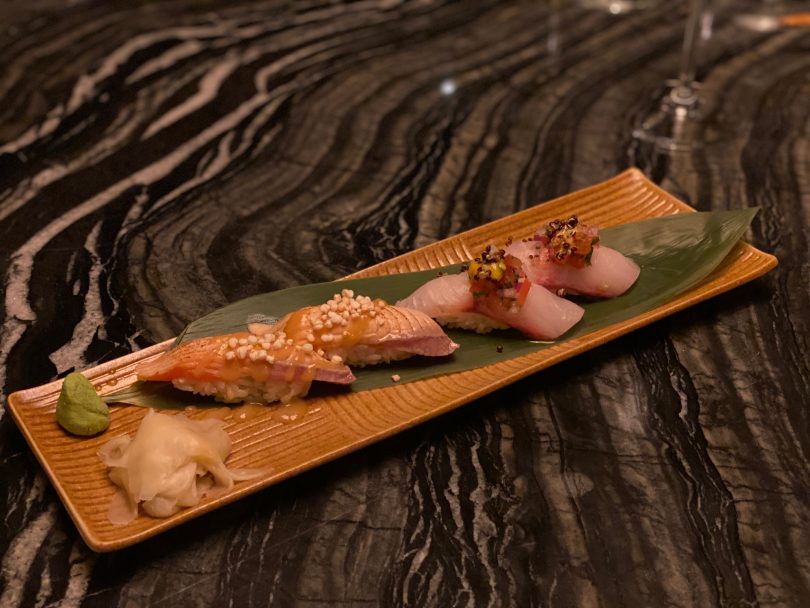
From the nigiri menu, salmon with yuzu miso and quinoa puffs, and tuna with salsa are excellent choices. Photo: Michelle Rowe.
Peru’s traditional dish of ceviche is beautifully executed and perfectly encapsulates the principles of Nikkei cuisine. Light and delicate cubes of raw tuna are drenched in citrus and paired with toasted kernels of corn which add crunch and texture. The dish has a nice kick of chilli.
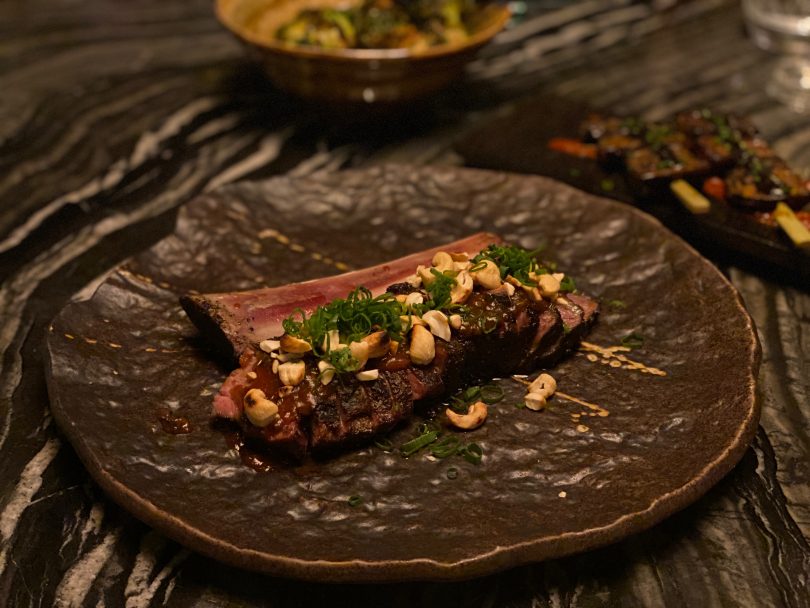
Inka’s Black Angus short rib, cooked for 48 hours is fall-apart tender. Photo: Michelle Rowe.
Committed carnivores won’t be disappointed either. The Black Angus short rib cooked for 48 hours and flavoured with jalapeno and miso glaze is fall-apart tender and utterly delicious. Pair it with the crispy Brussels sprouts with furikake and yuzu glaze.
Then there’s the range of empanadas (beef, chicken and a terrific vegetable version packed with quinoa, corn, peas, mild chilli and cumin), which come with a tangy chilli dipping sauce.
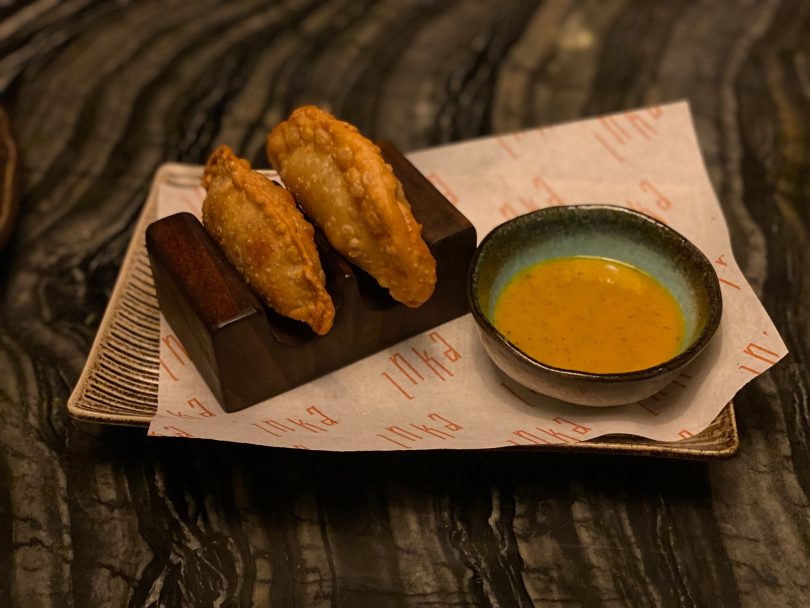
The empanadas at Inka come in beef, chicken and vegetarian versions, with a spicy dipping sauce. Photo: Michelle Rowe.
If you have the staying power, finish with the coconut sesame panna cotta which comes with a perfectly paired orange salsa – it’s lactose and gluten-free. The chilli chocolate fondant with pisco guava sorbet is one to come back for.
Anticipation can be a tricky thing, with raised expectations often dashed. But on first view, Inka has been well worth the wait.
The food is terrific – its eclectic but not too crowded menu offers something different for Canberra’s discerning diners, and the atmosphere is buzzing. The staff, including our excellent server Harry, are clearly delighted to be working at Canberra’s coolest new haunt.
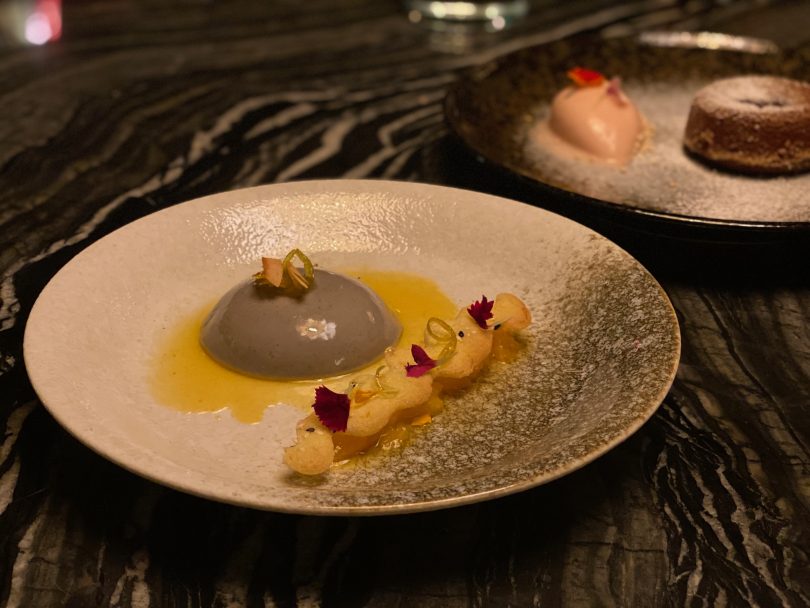
Coconut sesame panna cotta with orange salsa is a perfect way to finish the meal. Photo: Michelle Rowe.
Inka is a welcome addition to the city’s dining scene, despite the challenges in bringing it to life. Catching up with Sunny Matharu for a chat after dinner, he brushes away questions around the riskiness of opening an expensive new hospitality venue at any time, let alone in the middle of a pandemic.
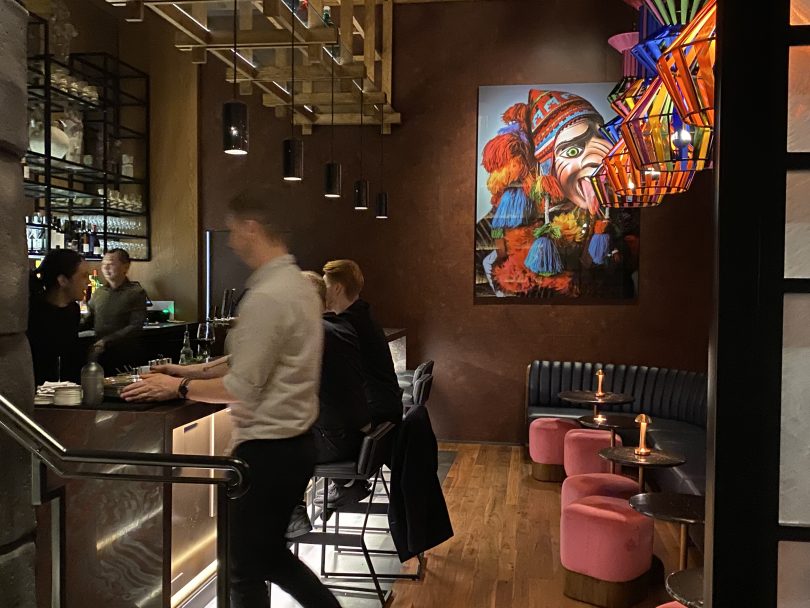
Stop by for a cocktail at the compact new bar at Inka in Bunda Street. Photo: Michelle Rowe.
“We’ve always known the market here, that Canberrans like to be challenged when it comes to food. We’ve always felt comfortable here,” he says.
In fact, Inka may not be the last we hear of Sunny and his crew.
“We’d love to have a couple more restaurants in Canberra,” he says. “But they’d be something completely different.”
Inka is located at 148 Bunda Street, Canberra and is open for lunch and dinner.
Original Article published by Michelle Rowe on The RiotACT.


